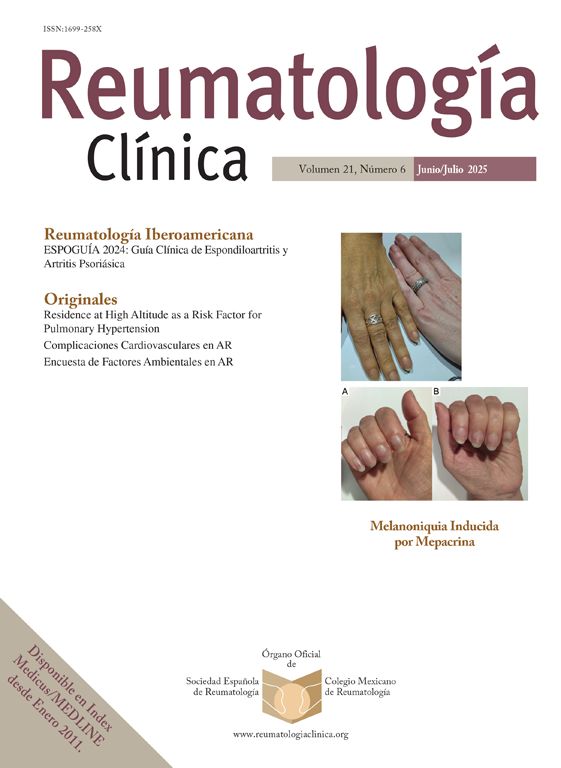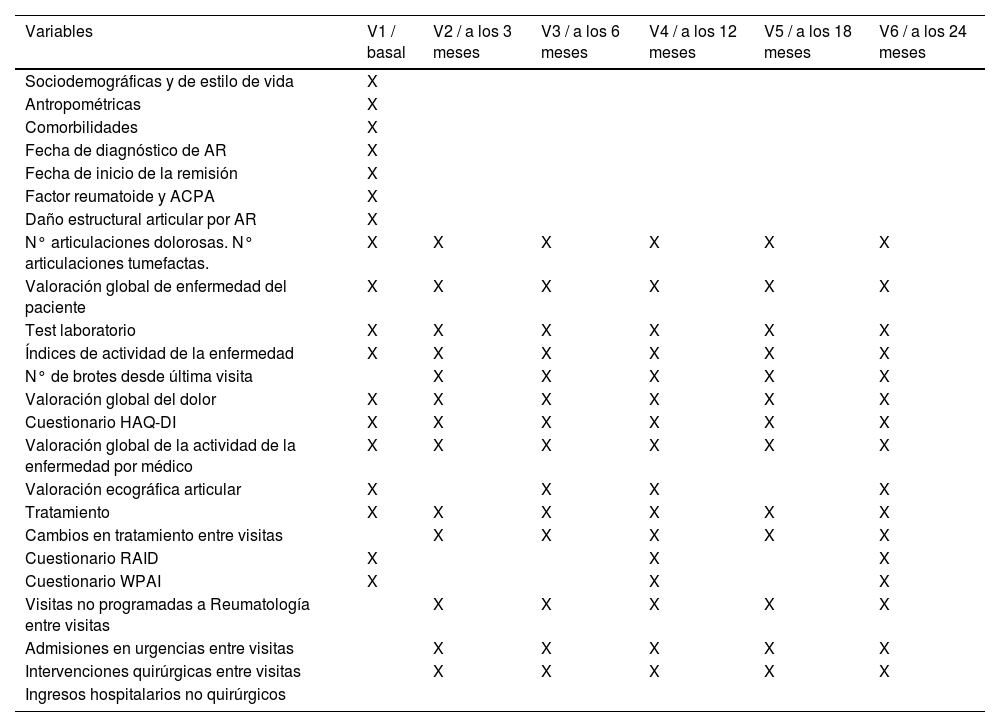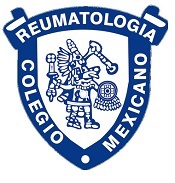El proyecto SUMAR estableció una definición de remisión que incorpora la perspectiva del paciente (la valoración global del dolor y el HAQ) en la definición de la remisión en artritis reumatoide (AR). Esta nueva definición debe ser evaluada en la práctica clínica. El objetivo principal del estudio Remisión-AR es estimar durante un seguimiento de 2 años la proporción de pacientes en remisión sostenida según la definición SUMAR. Este manuscrito detalla los objetivos y la metodología del estudio.
Materiales y métodosSe trata de un estudio longitudinal, prospectivo, observacional y multicéntrico, con la participación de 10 centros. Se incluirán los pacientes con AR que hayan alcanzado remisión clínica en los últimos 6 meses según juicio clínico de su reumatólogo. Se realizarán visitas de seguimiento a los 3, 6, 12, 18 y 24 meses. En cada centro participante, un reumatólogo experto en ecografía, ciego al resto de hallazgos del estudio, valorará la señal Power Doppler (PD) para 30 articulaciones y 6 regiones tendinosas. Se emplearán las definiciones de remisión según SUMAR, PD e índices de actividad. Se considerará remisión sostenida para cada una de las definiciones, cuando el paciente en remisión en la visita basal la mantenga durante todas las visitas de seguimiento. Para estimar la proporción de pacientes que mantienen la remisión a los 2 años con una exactitud de al menos un 6% se necesitarán 180 pacientes.
Discusión y conclusionesLa principal fortaleza del diseño es el empleo de la evaluación ecográfica como patrón oro para valorar la actividad inflamatoria.
The SUMAR project established a definition for remission that includes the patient's perspective (global assessment of pain and HAQ) in the definition of remission in rheumatoid arthritis (RA). This new definition needs to be assessed on clinical practice. The main objective of the RA-Remission study is to estimate the proportion of patients in sustained remission according to SUMAR definition through 2-year follow-up, among patients in SUMAR remission at baseline. This manuscript describes the objectives and methodology of the study.
Materials and methodsThis is a longitudinal, prospective, observational and multicentre study, involving 10 centres. Patients with RA who have achieved clinical remission in accordance to their attending rheumatologist clinical judgement within the last 6 months will be included. Follow-up visits will take place at 3, 6, 12, 12, 18 and 24 months. Ultrasound assessment of the power Doppler (PD) signal for 30 joints and 6 tendon regions will be performed at each participating centre by an expert blinded to all other study findings. Definitions of remission according to SUMAR, PD and activity indices will be used. Sustained remission will be considered for each of the definitions when the patient in remission at the baseline visit maintains it during all follow-up visits. To estimate the proportion of patients maintaining remission at two years with an accuracy of at least 6%, 180 patients will need to be recruited.
Discussion and conclusionsThe main strength of the design is the use of ultrasound assessment as the gold standard for assessing inflammatory activity.








